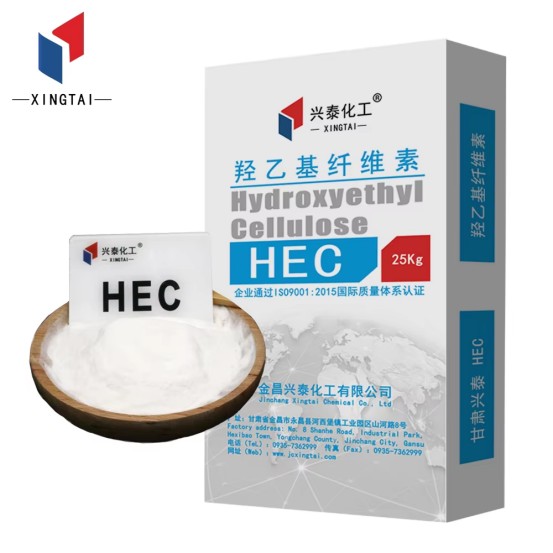CONTACT US
Hydroethyl cellulose (HEC) is mainly used as a thickener, stabilizer, suspending agent, and humectant in the daily chemical field. With its good waterubility, high transparency, and excellent salt resistance, it is widely used in shampoos, shower gels, face creams, toothpastes, and toners,. Its usage method needs to be adjusted according to the product dosage form (such as liquid, paste, and gel) and functional needs. The core is to achieve stable thickening and avoid caking through reasonable dissolution, dispersion, and compatibility. The following are specific usage methods and precautions:
1. Basic usage principle
Dosage form adaptation: Select the corresponding viscosity grade of HEC according to the product form (such as low-viscosity toner, high-viscosity hair mask). (Typically, the range of HEC for daily chemical is 50-100,000 mPas).
Low viscosity (50-500 mPas): Suitable for low-viscosity products such as toner and essence, playing a slight thickening and stabilizing role.
Medium to high viscosity (100-100,000 mPa・s): Suitable for shampoos, face creams, toothpaste, etc., which require higher viscosity and capacity.
Dissolution characteristics: HEC is in powder form, and it is easy to agglomerate and clump when directly added to water ("fish eye). It is necessary to avoid clumping and ensure uniform dispersion through pre-dispersion or stepwise dissolution.

2. Usage method in specific products
1.ampoo, shower gel (liquid cleaning agent)
Action: Increase the viscosity of the thickening system, improve fluidity (prevent stratification), and enhance the stability of foam
Operation steps:
Take the amount of deionized water in the formula (about 80% of the total water), heat it to 40-5℃ (to accelerate dissolution and avoid high temperature damage to active ingredients).
Under stirring (medium-speed stirring, to avoid excessive foaming), slowly sprinkle the H powder into the water (it can be pre-mixed with a small amount of powdery raw materials such as sodium chloride to prevent caking), and continue stirring until it completely dissolved (about 15-30 minutes until no particles).
Add surfactants (such as sodium dodecyl sulfate), conditioners (such silicone oil), fragrances, and other ingredients, and continue stirring until well mixed.
If the viscosity is insufficient, a small amount of sodium chloride can be added (rolyte synergistic thickening), and adjust to the target viscosity.
Quantity: Usually 0.2%-1.0% (depending on the target, the usage amount of high-viscosity models can be reduced).
2. Face cream, lotion (paste-type cosmetics)
Action: Increase the system' viscosity, stabilize the dispersion of oil phase, and improve the smoothness of application.
Operation steps:
Preparation of water phase: Disperse HEC in deionized (you can moisten HEC powder with glycerol first to enhance the dispersibility), and stir at low speed until swollen and dissolved (at room temperature or 3-40℃, to avoid high temperature causing water evaporation).
Preparation of oil phase: Heat the oil (such as petroleum jelly, olive oil), emuls (such as glyceryl stearate) to 70-80℃ to melt and mix.
Emulsification stage: Slowly pour the oil phase into water phase under stirring, cool to below 40℃, and then add preservatives, fragrances, active ingredients (such as vitamin C), and stir until room temperature
Note: HEC must be completely dissolved in the water phase before mixing with the oil phase to avoid system roughness due to uneven dispersion; the usage amount is usually 01%-0.5% (too high may cause the product to be sticky and greasy)
3. Toothpaste, mouthwash (oral care products)
Function: Thickening and shapingprevents toothpaste from collapsing), suspending abrasives (such as calcium carbonate), improving flavor (reducing astringency).
Operating steps:Toothpaste: First, mix HEC with deionized water and humectant (such as sorbitol), stir at high speed until a transparent gel-like is formed (HEC fully swells), then add abrasives, surfactants (such as sodium dodecyl sulfate), and sweeteners, and stir a uniform paste is obtained.
Mouthwash: Add HEC to deionized water, stir at low speed until dissolved, then add antibacterial agents (such as chloridine), flavorings, ethanol (if any), adjust pH to neutral, and avoid HEC precipitating under acidic conditions.
Dosage: 05%-1.5% in toothpaste, 0.1%-0.3% in mouthwash.
4. Mask, gel (high moisture type)
Function: a gel skeleton (retain moisture), enhance adhesion to the skin, stabilize active ingredients (such as hyaluronic acid).
Operating steps:
Huronic acid mask: Mix HEC with deionized water at a ratio of 1:100, soak and swell (can be refrigerated to accelerate swelling, after forming a transparent gel, add humectants and plant extracts, stir evenly and apply to a mask sheet.
Cleaning gel: After HEC dissolves in water add amino acid surfactant, chelating agent (such as EDTA), stir until no particles remain, and adjust the viscosity to a suitable consistency for application (avoid too thin to drip).
Advantages: HEC gel has high transparency and does not affect the appearance of the product; the dosage is usually 0.3%-10%.
III. Key usage techniques
Dispersion to prevent caking:
Dry method: Mix HEC with other powdery raw materials (such as sodiumide, talcum powder) in advance, and then sprinkle into water (using powder to isolate and avoid clumping).
Wet method: First, disperse H in highly polar solvents such as glycerol and propylene glycol, and then add water and stir (solvents help HEC to quickly moisten and swell)
Control stirring speed: Low speed stirring initially (to prevent entrainment of too many air bubbles), and after HEC is completely dispersed, the speed can be increased accelerate dissolution; avoid vigorous stirring that can cause a decrease in viscosity (shear destroys molecular chains).
Temperature and pH:
Dissolution temperature: Room temperature 50℃ is appropriate (over 60℃ may cause HEC molecular chain breakage, reducing thickening effect).
pH range: Stable from 510, avoid strong acid (pH<3) or strong alkali (pH>12) environments (may cause hydrolysis, affecting viscosity).Compatibility with other ingredients:
Cooperative use with electrolytes (such as sodium chloride) can enhance thickening effect (suitable for shampoo, shower gel), but use can cause salting out (needs to be tested to determine the best ratio).
Avoid direct mixing with cationic surfactants (may cause charge ads, leading to precipitation), and dissolve separately before mixing.
IV. Summary
The core of using HEC in the cosmetics industry is "disperse first, then dissolve control conditions", and it is necessary to select the appropriate viscosity model according to the product dosage form, and optimize the dispersion method and process parameters (temperature, stirring, compatibility to achieve the effect of thickening and stability. Although its dosage is low (usually < 2%), it has a significant impact on the texture and use of the, and it needs to be adjusted repeatedly in combination with specific formulations to achieve the best state.
Get real-time quotes
Interested? Leave your contact details.
